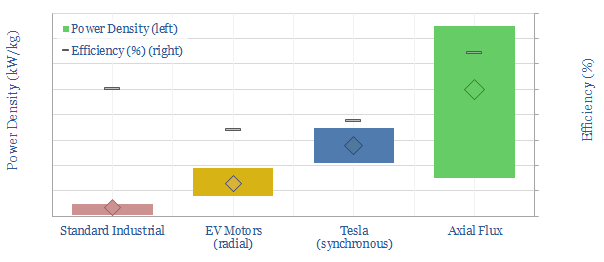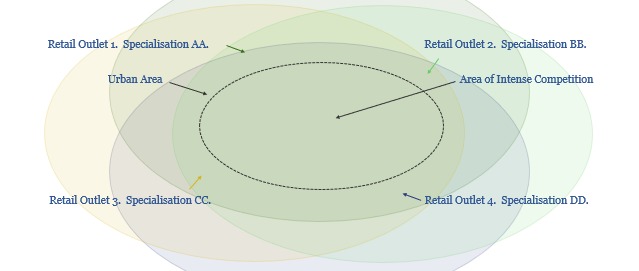Motor innovations are an overlooked enabler for the electrification of transport. This 15-page note explores whether axial flux motors could come to dominate in the future. They promise 2-3x higher power densities, even versus Tesla’s world-leading PMSRMs; and 10-15x higher than clunky industrial AC induction units; while also surpassing c96% efficiencies. This extends the range of EVs and the promise of drones/aerial vehicles.
Traditional AC induction motors are described on pages 2-6, outlining how they work, their efficiency, middling reliability and typically low power density.
Electrification of transport already uses a step-change in motor design, to yield higher power density and controllability. Tesla’s PMSRM is world-leading. Details are laid out on page 7.
But a totally novel motor design is gaining ground. This is the axial flux motor, described on pages 8-11. Power density is 10x a traditional AC induction machine, efficiency is enhanced, and lower material usage may also yield important cost-savings.
Power electronics are overlooked in the revolution of electrifying transport. We note the importance of Moore’s Law on page 12, in the attempt to electrify passenger cars, two-wheelers and even aerial vehicles in the future.
Leading companies in axial flux motors are profiled on pages 13-15, based on reviewing 1,200 patents, and the technical specifications of their products. Auto-makers have started acquiring industry leaders, while earlier-stage companies are also raising capital.


